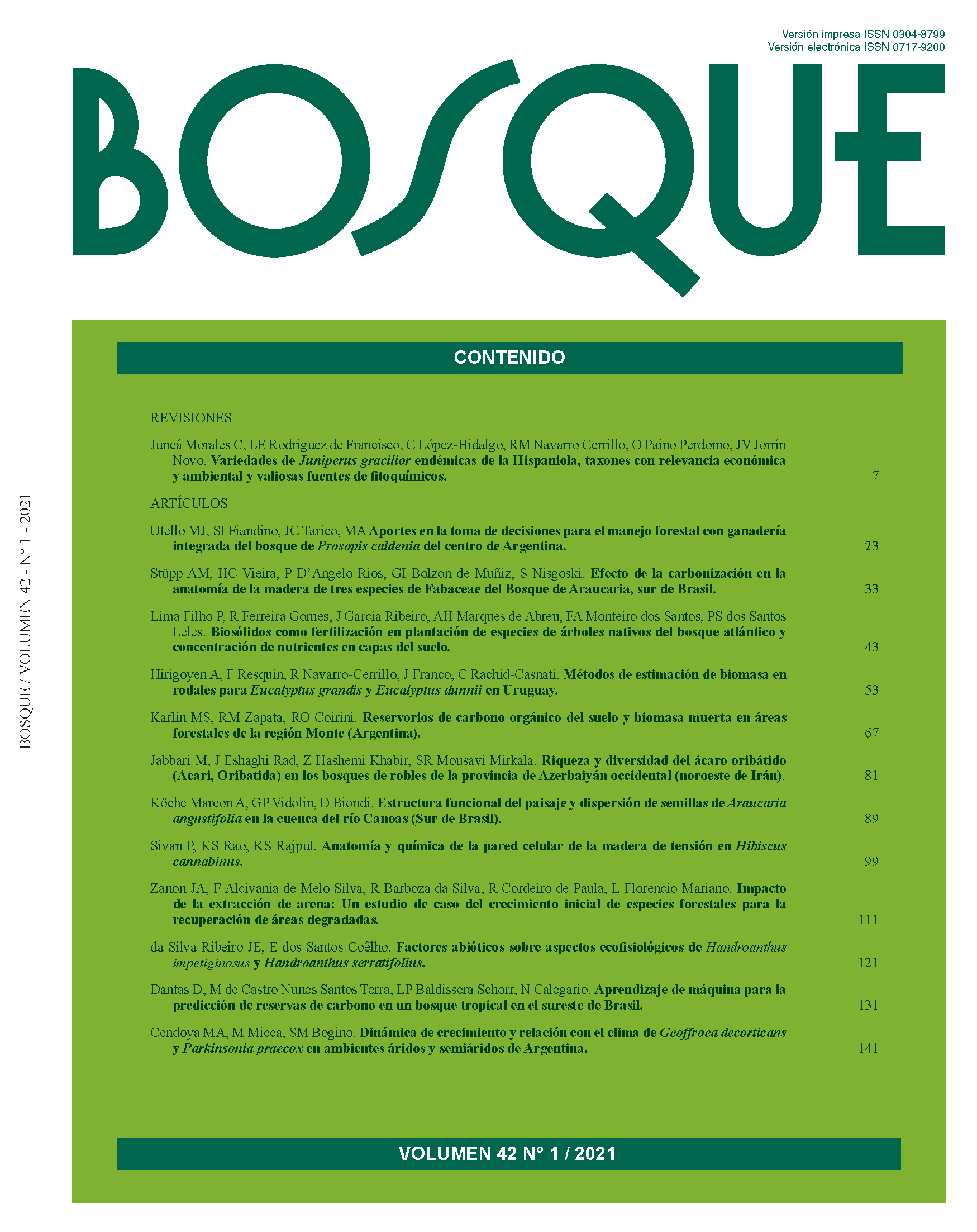Oribatid mite (Acari, Oribatida) richness and diversity in Oak forests of West Azerbaijan Province (Northwestern Iran)
Conteúdo do artigo principal
Resumo
Up to now, oribatid mite richness and diversity have not been studied in oak forests of Iran. This study aimed at determining the relationships among Oribatid mite composition, richness and diversity as well as ecological factors such as elevation, soil pH and soil moisture, tree species and stand density in oak forests in northwestern Iran. Thirty samples were randomly arranged at three elevation levels (1,100-1,300 m, 1,300-1,500 m and 1,500-1,650 m). Results indicated that 42 oribatid mite species were recorded in the study area. Nine and six species were exclusively observed in the elevations 1,100-1,300 and 1,300-1,500 m, respectively; while five mite species were commonly recorded in these two elevation categories. The study revealed that oribatid mite composition was affected by elevation gradient; however, the mean differences of species richness and diversity indices were not significant among elevation categories. Moreover, there were no significant correlations either between the densities of most frequent species of oribatid mite species and soil pH (except for Tectoribates sp.), soil moisture (except for Tectocepheus velatus), elevation, density of Quercus infectoria and density of Quercus libani in study area. Generally, variations in oribatid mite composition were more affected by physiographic factors e.g., altitude than by soil properties and oak species densities, nevertheless no environmental factors influenced oribatid mite richness and diversity in this region.

